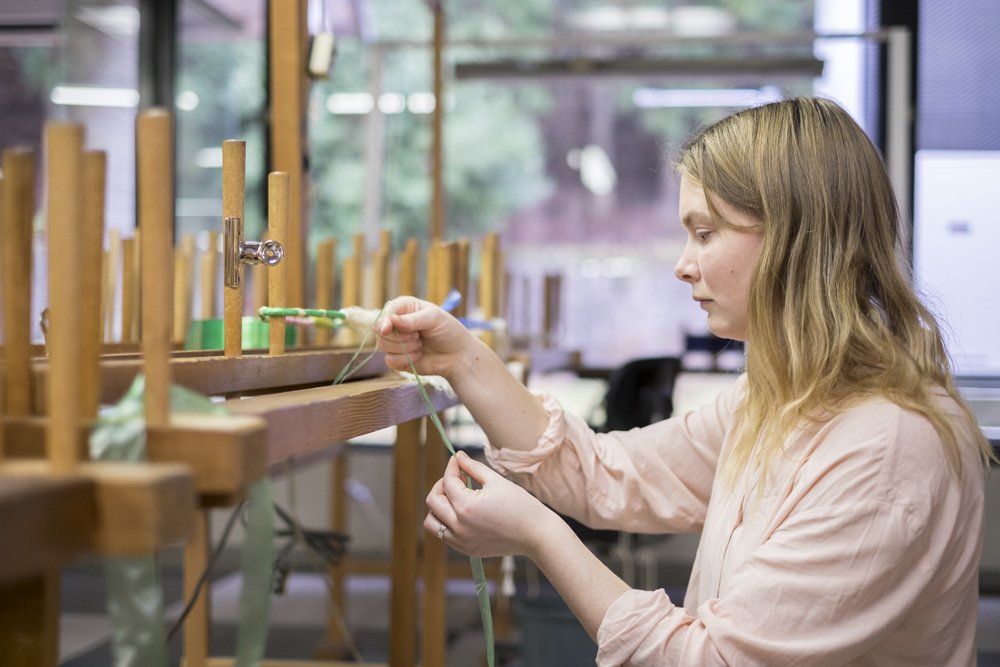 As I Remember It
As I Remember ItIn my work I have tried to express memories in colours of my time at Kawashima Textile School and in Kyoto. I arrived in May 2012, the sun was warm, the mountains were all so green. I found friends and the Hibiscus was in full bloom. The last week it started to rain but it was still so beautiful and warm.
I wanted to use the kasuri technique that I learned from my Japanese teachers at the same time as I tried to find my own expression. To achieve that I have laborated with colours and shapes. To create depth in the colour of the figures I have dyed the warp and the weft iwth different colours. I choose to work with linen because the fibre is strong and has an interesting structure and shines almost like silk. I like to call it the Nordic Silk.
Patricia Schoeneck (Sweden)
---
Born in 1980, Stockholm, Sweden
Education:
Handarbetets vänners skola, Weaving and embroidery, Stockholm 2010-
Kawashima Textile School, Kasuri foundation and applied I, Kyoto May 2012
Nyckelviksskolan, Textile art and design, Stockholm, 2010
Konstfack, Art teacher education, Stockholm, 2007-2009
Konstskolan i Stockholm, Art foundation studies, 2007
Stockholms Tillskärarakademi, Pattern construction and couture studies, 2006
Patricia was an exchange student from HV Skola (Sweden) and studied in the Foundation Kasuri Course and Applied Kasuri Course I in spring 2012 (She has shared her thirty-two days in Kyoto on her photo blog, trettiotvå i Kyoto!). Patricia worked on this piece that autumn after returning to HV Skola. She will be coming to KTS again in autumn 2013 to study kasuri for another month.






